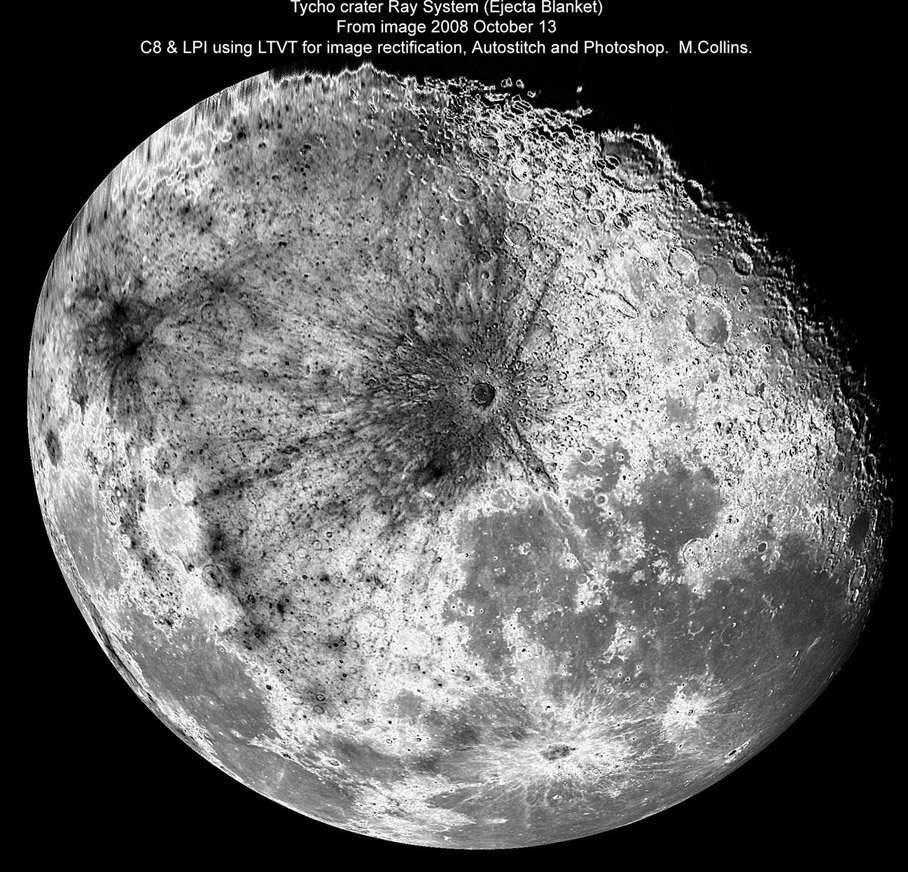May 24, 2018
An Oblique Impact
Originally published January 29, 2009

image by Maurice Collins, New Zealand
Crater rays are a popular subject lately. The distribution of Copernicus' rays and impact melt suggest it was formed by a moderately oblique impact, and Tycho's rays are even less symmetrical. Maurice has used LTVT to rectify one of his nearly full Moon images to view the Moon from directly above Tycho. He also strenuously enhanced the image to maximize contrast between some rays and their backgrounds. The resulting image clearly shows that there are almost no rays for an approximately 135° arc opening toward the southwest limb (and in fact, there is a 180° swath with only one major ray passing to the west of Mare Nubium). This is consistent with a wider zone of impact melt, more secondary craters, and a lower rim, all to the east. Another non-symmetrical ray center is at the far left of the image where two small bright craters formed. They are both probably oblique impacts with longer rays than expected. The broad ray that crosses Tycho's rays is an odd oblique ray.
Chuck Wood
Technical Details
Maurice writes: Over the Christmas holidays I made these rectified images of Tycho using LTVT. I found I can make large scale mosiacs from the LTVT images to get higher resolution/scale images by mosaicing the smaller images together under the zoom function. I use autostitch for the mosaics and Photoshop for the processing. I also used the Photoshop solarize technique on Tycho's rays to make them stand out against the surface
Related Links
Rükl plate 64
Yesterday's LPOD: Ramparts
Tomorrow's LPOD: 3 Billion Years Too Late
COMMENTS?
Register, Log in, and join in the comments.



